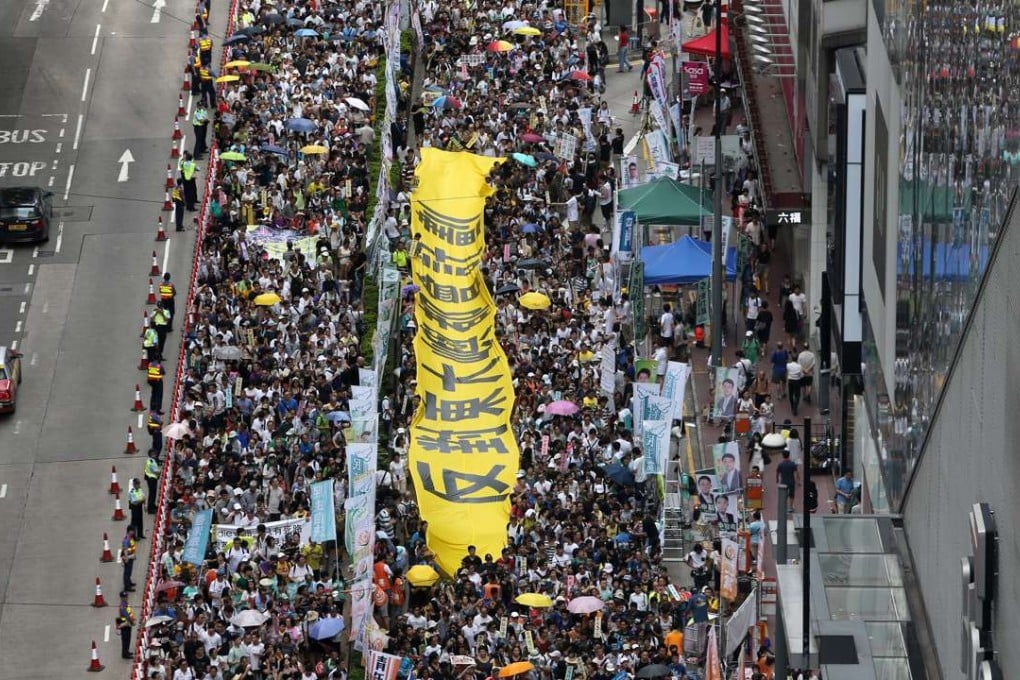Advertisement
July 1 march organiser claims turnout of 110,000, far above police estimate of 19,300
Force’s figure down from the 19,650 they tallied at last year’s event
Reading Time:6 minutes
Why you can trust SCMP

This was the Post’s real-time coverage of the July 1 march.
7.17pm: Organiser announces turnout
Jimmy Sham Tsz-kit, convenor of the Civil Human Rights Front, announced that 110,000 people attended today.
Advertisement
He thanked Hongkongers for attending the protest despite the hot weather. He also urged protesters to continue to pay attention to the case of bookseller Lam Wing-kee to ensure his safety.
Police, however, estimated turnout was only 19,300 at its peak – down from the 19,650 participants the force counted in last year’s march.
Advertisement
6.10pm: Police reinforcements ready
Advertisement
Select Voice
Choose your listening speed
Get through articles 2x faster
1.25x
250 WPM
Slow
Average
Fast
1.25x